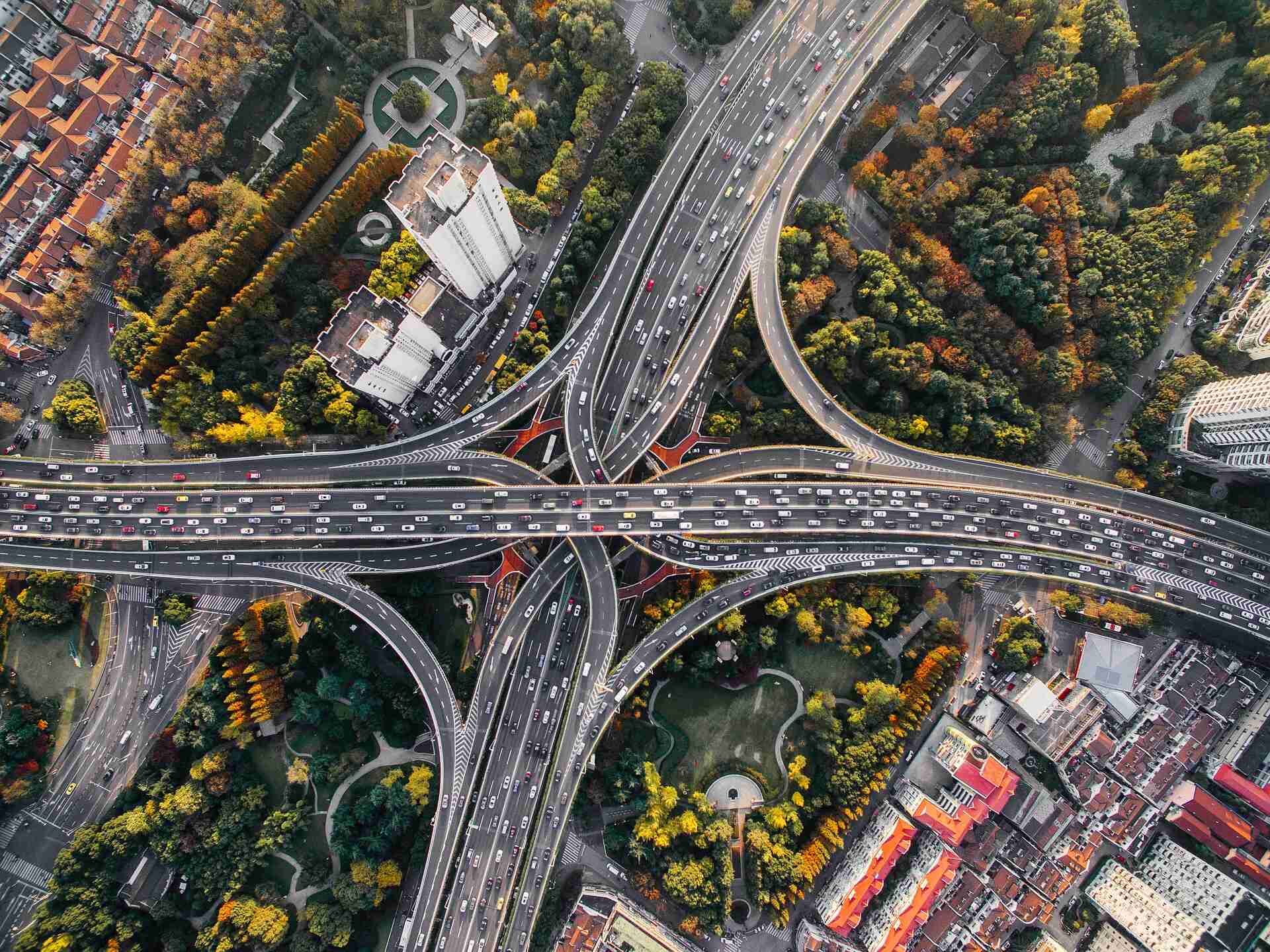
Urbanization and infrastructure development are two interconnected phenomena that have significantly shaped the modern world. As more people migrate to cities in search of better opportunities, urban areas continue to expand and evolve at an unprecedented rate. This rapid urbanization has brought about numerous changes, both positive and negative, to society and the environment.
In this article, we will explore 17 astonishing facts about urbanization and infrastructure that highlight the immense impact they have had on our lives. From mind-boggling statistics on population growth and city sizes to fascinating insights on transportation systems and sustainability, these facts will give you a glimpse into the complex and dynamic world of urban development.
So, buckle up and get ready to delve into the fascinating world of urbanization and infrastructure as we uncover some eye-opening facts that will leave you in awe.
Key Takeaways:
- Urbanization is rapidly increasing, with over half the world’s population living in cities. This trend brings economic opportunities and challenges, highlighting the need for sustainable urban planning and infrastructure development.
- Cities are hubs of diversity, innovation, and economic growth, but they also face challenges like traffic congestion and inadequate housing. Sustainable urban planning is crucial for creating livable, resilient, and inclusive cities for the future.
Nearly 55% of the world’s population live in urban areas.
Urbanization has been rapidly increasing, with more and more people choosing to live in cities rather than rural areas. This trend is driven by various factors such as economic opportunities, access to better infrastructure, and improved quality of life.
Tokyo is the most populous city in the world.
With a staggering population of over 37 million, Tokyo holds the title for being the most populous city on the planet. This bustling metropolis is known for its advanced infrastructure, efficient public transportation system, and vibrant culture.
The Great Wall of China is a remarkable example of infrastructure.
Stretching over 13,000 miles, the Great Wall of China is one of the world’s most impressive infrastructural achievements. This magnificent structure was built to protect China from invasions and stands as a testament to the engineering prowess of ancient civilizations.
Urban areas contribute over 70% of global greenhouse gas emissions.
Rapid urbanization has led to increased energy consumption and transportation emissions, contributing to the depletion of natural resources and climate change. Sustainable urban planning and development are crucial to mitigate these harmful effects.
New York City has one of the oldest and most extensive subway systems.
The New York City subway system, established in 1904, is not only one of the oldest but also one of the largest and most extensive public transportation networks in the world. It covers a vast network of routes, connecting millions of commuters each day.
Informal settlements, also known as slums, are prevalent in many urban areas.
Around 1 billion people worldwide live in informal settlements, lacking basic amenities and proper infrastructure. Improving the conditions of these settlements is a significant challenge for urban planners and policymakers.
Singapore is known for its efficient urban planning and infrastructure.
Singapore is renowned for its meticulous urban planning and efficient infrastructure. The city-state has transformed itself from a small fishing village to a global financial hub with world-class amenities, efficient transportation systems, and sustainable green spaces.
The urban heat island effect is a phenomenon caused by urbanization.
Urban areas with dense buildings, concrete structures, and limited green spaces often experience higher temperatures than the surrounding rural areas. This urban heat island effect is a result of reduced vegetation, increased energy consumption, and heat-trapping materials.
The Panama Canal revolutionized global trade and transportation.
The completion of the Panama Canal in 1914 drastically reduced the shipping time between the Atlantic and Pacific Oceans, transforming global trade and transportation. This remarkable engineering feat has had a profound impact on international commerce and connectivity.
Mumbai, India, has one of the busiest railway systems in the world.
Mumbai’s suburban railway system, known as the Mumbai Local, is one of the busiest and most crowded in the world. This extensive network transports millions of commuters daily and plays a vital role in the city’s transportation infrastructure.
The United Nations projects that 68% of the world’s population will live in urban areas by 2050.
The ongoing trend of urbanization is expected to continue, with the United Nations predicting that approximately 68% of the global population will reside in urban areas by the year This projected growth poses various challenges and opportunities for sustainable urban development.
Urban areas generate more than 80% of global GDP.
The concentration of economic activities in urban areas is significant, with cities contributing to more than 80% of the world’s Gross Domestic Product (GDP). Thriving urban economies play a crucial role in driving global economic growth and development.
The construction industry plays a significant role in urban development.
The construction industry is a vital driver of urban development, creating employment opportunities, shaping skylines, and ensuring the functionality of urban infrastructure. It encompasses various sectors, including residential, commercial, and public infrastructure projects.
Seoul, South Korea, has the fastest internet speed in the world.
Seoul, the capital of South Korea, boasts the fastest internet speed globally, with an average speed of 26.1 Mbps. The city’s advanced digital infrastructure has positioned it as a global leader in technology and innovation.
Urbanization can lead to increased cultural diversity and cosmopolitanism.
As people from different backgrounds come together in urban areas, it leads to a rich cultural tapestry and promotes diversity, tolerance, and cosmopolitanism. Urban centers become melting pots of various languages, customs, and traditions.
Rapid urbanization puts pressure on existing infrastructure and services.
As urban populations grow rapidly, existing infrastructure and services often struggle to keep up with the increasing demand. This includes challenges such as traffic congestion, inadequate housing, overburdened public transport, and strained utility networks.
Sustainable urban planning is essential for the future.
Addressing the challenges posed by urbanization requires sustainable urban planning. This involves designing cities that prioritize green spaces, energy efficiency, public transportation, affordable housing, and equitable access to resources and services.
Conclusion
Urbanization and infrastructure are integral components of modern society, shaping the way we live, work, and interact with our surroundings. Through rapid urbanization, cities have grown into bustling hubs of innovation, diversity, and opportunity. At the same time, the development of robust infrastructure is crucial for providing essential services and supporting the needs of a growing population.
From skyscrapers reaching for the sky to intricate transportation networks connecting people and goods, urbanization and infrastructure have transformed the world we live in. These 17 astonishing facts about urbanization and infrastructure highlight the incredible progress made and the challenges that lie ahead.
FAQs
1. What is urbanization?
Urbanization is the process by which an increasing number of people choose to live in urban areas, leading to the growth of cities and towns.
2. How does urbanization impact society?
Urbanization has a significant impact on society, contributing to economic growth, cultural diversity, and technological advancements. It also presents challenges related to housing, transportation, and sustainability.
3. Why is infrastructure important for urbanization?
Infrastructure, such as roads, bridges, schools, and healthcare facilities, is essential for supporting urbanization. It ensures the efficient functioning of cities and improves the quality of life for residents.
4. What are some examples of urban infrastructure?
Examples of urban infrastructure include transportation systems (such as roads, railways, and airports), water supply and sanitation networks, energy grids, and communication networks.
5. How does urbanization impact the environment?
Urbanization can have negative environmental impacts, including increased pollution, habitat destruction, and the depletion of natural resources. However, sustainable urban planning can help mitigate these effects.
6. What are the challenges of urbanization?
Major challenges of urbanization include overcrowding, inadequate housing, traffic congestion, inequality, and the strain on resources and services. Urban planning and investment in infrastructure can help address these challenges.
7. How does infrastructure contribute to economic development?
Infrastructure plays a crucial role in driving economic development by attracting businesses, facilitating trade and transportation, and improving productivity and efficiency.
8. What is the role of technology in urban infrastructure?
Technology plays a vital role in modern urban infrastructure, enabling the implementation of smart solutions for energy management, transportation systems, waste management, and public services.
9. How can we ensure sustainable urbanization?
Sustainable urbanization can be achieved through careful urban planning, incorporating green spaces, energy-efficient buildings, public transportation, and sustainable waste management practices.
10. How is urban infrastructure financed?
Urban infrastructure is typically financed through a combination of public funding, private investments, and public-private partnerships. Governments often play a significant role in funding and overseeing infrastructure projects.
11. What is the future of urbanization and infrastructure?
The future of urbanization and infrastructure will likely involve continued growth and innovation, with a focus on sustainable development, resilience, and the integration of new technologies to improve quality of life in urban areas.
Was this page helpful?
Our commitment to delivering trustworthy and engaging content is at the heart of what we do. Each fact on our site is contributed by real users like you, bringing a wealth of diverse insights and information. To ensure the highest standards of accuracy and reliability, our dedicated editors meticulously review each submission. This process guarantees that the facts we share are not only fascinating but also credible. Trust in our commitment to quality and authenticity as you explore and learn with us.


